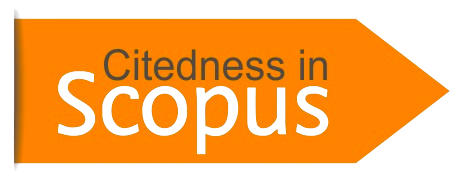HUBUNGAN KONFORMITAS TERHADAP KELOMPOK DENGAN KEDISIPLINAN SISWA DI SEKOLAH PADA SISWA KELAS II SMU YKM TANJUNGSARI SUMEDANG
DOI:
https://doi.org/10.15575/psy.v1i1.2170Keywords:
Conformity, Self RegulatoryAbstract
In adolescence, conformity aspect in a peer group was one of important aspect in their social life since adolescences need safety and acceptability feeling from their peer group much more than other age group. Teenagers have conformity for their peer group and tend to accept and follow rules and standards adopted by their peer group including changing perception, opinion, behaviors and their attitudes to become more â€acceptable†by their friend in a group.
Many teenagers have strong bond with their friends and tend to behave inappropriately with rules and values in society. Indisciplinary behavior conducted at school showed a correlation with their peer group which can be seen from their â€breaking rules†attitudes such as, smoking in the class, inapproapriate clothing, not doing their homework and
Research methods used in this research is a correlational model and using Marvin Shaw’s group conformity scale and student’s disciplinary scale from Ausubel. SPSS 11.5 were then used to test the validity and reliability of those two measurement methods. Spearman rank correlation technique dan were used to analyze data taken from 129 students of Grade II SMU YKM Tanjungsari. Statistical analysis conducted in this research was given the result of -0,673 whilst by using testing criterion with significany 5 percent would then concluded that the research hypothese is acceptable.
Brief conclusion from this research was given a result that there is a negative relations between conformity toward the peer group with indisciplinary behavior conducted by Grade II students at SMU YKM Tanjungsari.
References
Ahmad, Abu. (1992). Psikologi Umum Bina Ilmu. Jakarta: Rineka Cipta
Ahmad, Abu. (1995). Psikologi Sosial. Jakarta: Rineka Cipta
Ali, Lukman. (1995). Kamus Besar Bahasa Indnesia. Jakarta: Depdik-bud
Ancok, Djamaludin. (1989). Teknik Penyu-sunan Skala: Pengantar. Yogyakarta: Pusat Penelitian Kependidikan Uni-versitas Gajah Mada
Ausubel. (1973). Educational Psychology.
Azwar, Saepudin. (1999). Penyusunan Skala Psikologi. Edisi 1. Yogya-karta: Pustaka Pelajar.
Chaplin. (2001). Kamus Lengkap Psikologi. Jakarta: Raja Grafindo Persada.
Henry. (1994). Kamus Psikologi. Bandung: Armico
Hurlock, EB. (1999). Psikologi Perkem-bangan. Suatu pendekatan sepanjang rentang kehidupan. Edisi 5. Jakarta: PT Erlangga.
Nasrulloh, Ade. (2002). Kontribusi Kualitas Interaksi Sosial Kelompok Teman Se-baya di Sekolah terhadap Kreativitas Siswa. Bandung: IKIP
Kartono, Kartini. (1987). Kamus Psikologi. Bandung: Pionir Jaya
Mappiare, Andi. (1982). Psikologi Remaja. Jakarta: PT Gramedia.
Pryodarminto, Soegeng. (1992). Disiplin Kiat Menuju Sukses. Jakarta: PT Pradirja Paramitra
Schaefer, Charles. (1991). Bagaimana Mem-pengaruhi Perkembangan Anak. Se-marang: Daharaprize
Siegel, Sidney. (1986). Statistik Nonpara-metrik untuk Ilmu-ilmu Sosial. Ter-jemahan Zanzawi Suyuti & Landung Simatupang. Jakarta: Gramedia Pustaka.
Subari. (1994). Suverpisi Pendidikan dalam Rangka Perbaikan Situasi Mengajar. Jakarta; Bumi Aksara.
Sugiy0ono. (2003). Statistik untuk Penelitian. Bandung: CV Alfabeta
Sudjana, N. (1996). Metode Statistika. Edisi 5. Bandung: PT Tarsito.
Suharsimi, A. (1993). Dasar-dasar Evaluasi Pendidikan Bandung: Bumi Aksara.
Suharsimi, A. (1995). Prosedur Penelitian. Bandung: Rineka Cipta.
Sujanto, Agus. (1996). Psikologi Perkemba-ngan. Jakarta: Rineka Cipta.
Shaw, Marvin (1971). Group Dinamics. New Delhi : Company
Surya, M. (1999). Psikologi Perkembangan. Bandung: PPB, FIP IKIP
Yusuf, Syamsu. (2002). Psikologi Perkem-bangan Anak dan Dewasa. Bandung: PT Rosda Karya
Winkel, WS. (1996). Psikologi Pengajaran. Jakarta: PT Gramedia
Downloads
Published
Issue
Section
Citation Check
License
The author whose published manuscript approved the following provisions:
1. The right of publication of all material published in the journal / published on the E-Journal of Psychology website is held by the editorial board with the knowledge of the author (moral right remains the author of the script).
2. The formal legal provisions for access to digital articles of this electronic journal are subject to the terms of the Creative Commons Attribution-ShareAlike license (CC BY-SA), which means that the Journal of Psychology reserves the right to save, transmit media / format, manage in database form, , maintain, and publish articles without requesting permission from the Author as long as it continues to include the name of the Author as the owner of Copyright.
3. Printed and published print and electronic manuscripts are open access for any purposes. In addition to these objectives, the editorial board shall not be liable for violations of copyright law.
Â






